
Roots
The sensation of dryness, a persistent whisper across tightly coiled strands, often sparks a question that reaches beyond simple thirst. It beckons us to peer into the very essence of hair, its microscopic architecture, and the ancestral stories it carries. This perception of parchedness is not a mere surface affliction; it is a complex interplay of inherent structure, environmental dance, and the way moisture moves through the world of a single strand. To truly comprehend why tightly coiled hair so often feels dry, we must first descend to its foundational truths, understanding its unique anatomy and the scientific language that helps us speak of its profound beauty and specific needs.

The Unique Anatomy of Coiled Strands
At its core, hair, regardless of its outward presentation, is a protein filament, primarily composed of keratin. Yet, the journey of this protein from follicle to visible strand is where the tale of texture begins to unfold. Tightly coiled hair possesses a distinct elliptical cross-section, a departure from the rounder or oval shapes seen in straighter or wavier patterns.
This flattened, ribbon-like shape, coupled with the hair follicle’s S-shaped or helical configuration beneath the scalp, dictates the dramatic turns and spirals of the strand as it grows. Each twist and bend, while contributing to its magnificent volume and resilient spring, also presents a unique set of challenges for moisture distribution.
Consider the cuticle, the hair’s outermost layer, resembling shingles on a roof. In straight hair, these cuticular scales lie relatively flat, providing a smooth, continuous surface. However, on a tightly coiled strand, the constant changes in direction mean these scales are often lifted or unevenly laid at the curves.
This structural reality means the cuticle, the hair’s primary protective barrier, might not always lie as seamlessly, creating microscopic openings that allow moisture to escape more readily. This physical configuration, a direct consequence of its very shape, profoundly influences how the hair interacts with its environment and retains hydration.
The distinct elliptical cross-section and helical growth pattern of tightly coiled hair fundamentally alter its cuticle’s integrity, influencing moisture retention.

Understanding Hair Porosity and Coiled Hair
Hair porosity refers to the hair’s ability to absorb and retain moisture. It is largely determined by the state of the cuticle layer. While porosity is often discussed as a separate characteristic, it is inextricably linked to hair type, especially for coiled textures. Many individuals with tightly coiled hair find their strands exhibit high porosity, meaning the cuticle is often raised, allowing water to enter quickly but also to depart just as rapidly.
This is a common experience, leading to the familiar feeling of dryness even after applying hydrating products. Conversely, some coiled strands might exhibit low porosity, where the cuticle is tightly closed, making it difficult for moisture to penetrate in the first place, yet once inside, it holds onto hydration quite well. The perception of dryness in this instance stems from the initial struggle to get water into the hair shaft.
The interplay of hair’s inherent structure and its porosity is a critical element in addressing perceived dryness. It highlights that a blanket approach to moisturizing will likely fall short. Instead, a nuanced understanding of how one’s own unique coiled strands respond to water, emollients, and humectants becomes paramount.
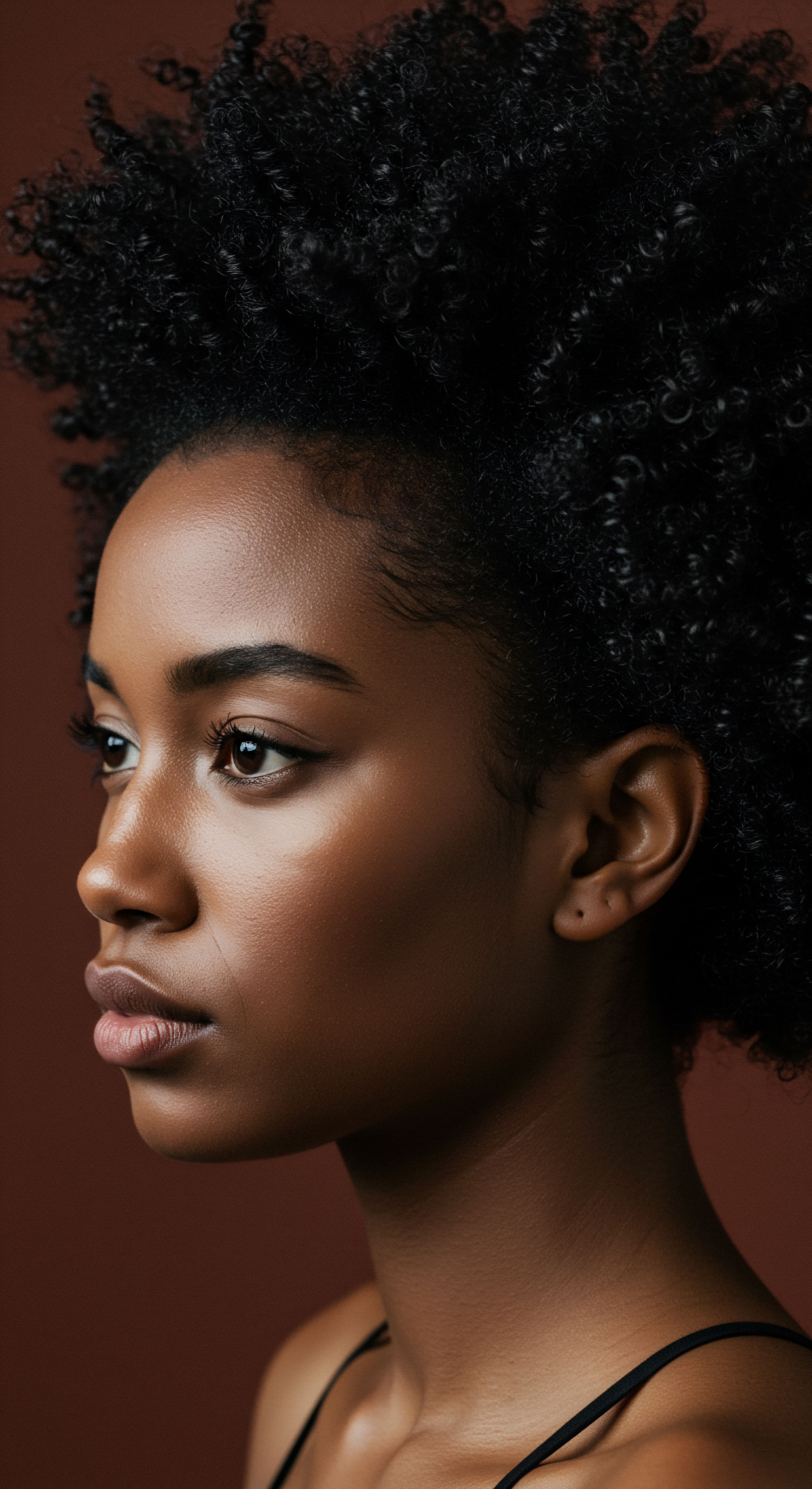
The Essential Lexicon of Textured Hair
To speak meaningfully about coiled hair and its unique needs, a shared understanding of terminology becomes essential. This lexicon helps us move beyond generalizations and pinpoint specific characteristics and conditions.
- Coil Pattern ❉ Refers to the specific shape of the hair strand, ranging from loose waves to tight, zig-zagging coils. Often classified using numerical and alphabetical systems (e.g. 4A, 4B, 4C) to describe the tightness and circumference of the curl.
- Cuticle ❉ The outermost protective layer of the hair shaft, composed of overlapping scales. Its condition directly impacts hair’s porosity and ability to retain moisture.
- Cortex ❉ The inner layer of the hair shaft, comprising the bulk of the hair’s mass and providing its strength and elasticity. It contains keratin proteins and melanin pigments.
- Sebum ❉ The natural oil produced by the sebaceous glands on the scalp. It acts as a natural conditioner, traveling down the hair shaft to lubricate and protect.
- Hydrophobicity ❉ The property of being water-repelling. Healthy hair, particularly its outer cuticle, exhibits some degree of hydrophobicity, which helps regulate water absorption and loss.

How Do Hair Growth Cycles Influence Perceived Dryness?
The life cycle of a hair strand, from its growth (anagen) phase to its resting (telogen) and shedding (exogen) phases, might not immediately seem connected to dryness. However, healthier hair, supported by a robust anagen phase, generally exhibits better structural integrity. When hair is consistently dry, it becomes more susceptible to breakage, which can shorten the effective length of the anagen phase by causing premature shedding or fracture. This leads to a cycle where the hair never quite reaches its full potential length, and the constant presence of newer, perhaps more fragile, growth contributes to a continuous battle against perceived dryness.
Furthermore, factors that disrupt the scalp’s health, such as inflammation or product buildup, can impede healthy growth, indirectly impacting the quality and resilience of emerging strands. A compromised scalp environment can lead to hair that is weaker from its inception, making it inherently more prone to feeling dry and becoming brittle as it grows.
| Component Hair Follicle Shape |
| Description Determines the elliptical cross-section and helical growth pattern. |
| Impact on Dryness Creates bends and twists that lift cuticle scales, allowing moisture escape. |
| Component Cuticle Layer |
| Description Overlapping scales forming the hair's protective outer barrier. |
| Impact on Dryness Unevenly laid scales in coiled hair can lead to increased porosity and water loss. |
| Component Sebum Distribution |
| Description Natural oils from the scalp that lubricate the hair. |
| Impact on Dryness Coiled shape impedes even distribution of sebum down the hair shaft, leaving ends drier. |
| Component Understanding these structural nuances is foundational to addressing the dryness of coiled hair. |
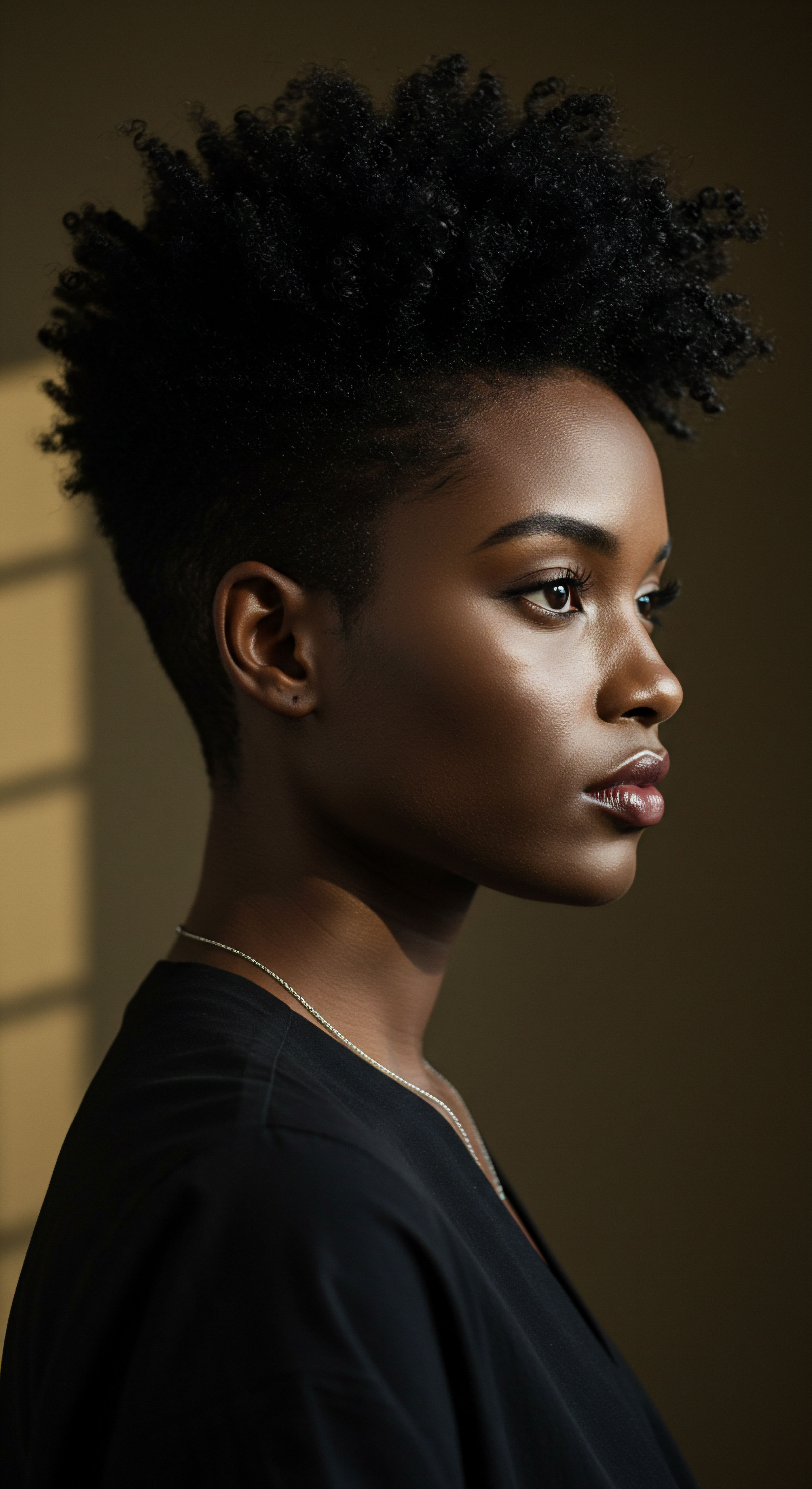
Ritual
Moving from the microscopic anatomy of a coiled strand, we arrive at the realm of daily practice and thoughtful application. The sensation of dryness in tightly coiled hair often prompts a deep desire for effective solutions, for rituals that truly nourish and sustain. This section guides us through the practical wisdom gleaned from generations of care, refined by scientific understanding, offering actionable insights that address the inherent characteristics of textured hair. It is here, in the intentional choices we make and the routines we cultivate, that we can transform the perception of dryness into a feeling of vibrant health.

Building Personalized Care Regimens
The quest for moisture in tightly coiled hair is not a singular pursuit; it is a layered process, requiring a regimen tailored to individual needs. The very nature of coils, with their frequent bends, makes it difficult for the scalp’s natural oils, sebum, to travel down the entire length of the strand. This means the ends, particularly, often receive less natural lubrication, contributing to a drier feel. A well-constructed regimen acknowledges this inherent challenge and seeks to supplement natural moisture with external sources.
A personalized regimen typically begins with a gentle cleansing, prioritizing sulfate-free formulations that cleanse without stripping the hair of its already limited moisture. Following this, deep conditioning treatments become paramount. These are not merely superficial applications but rather opportunities to infuse the hair shaft with humectants, emollients, and proteins that can temporarily fortify the cuticle and attract water. The frequency and type of these treatments should align with the hair’s porosity and current condition.

The Nighttime Sanctuary Essential Sleep Protection
The hours of sleep, often overlooked in hair care discussions, play a profoundly significant role in preserving the moisture and integrity of tightly coiled hair. Pillowcases made of cotton, while comfortable for sleeping, possess a fibrous texture that can absorb moisture from hair strands and create friction. This friction can lead to raised cuticles, tangles, and ultimately, breakage, exacerbating the feeling of dryness.
This is where the wisdom of nighttime protection, particularly the use of silk or satin bonnets and pillowcases, becomes invaluable. These materials offer a smooth surface that reduces friction, allowing hair to glide without snagging or absorbing its vital hydration. A well-fitting bonnet acts as a personal humidity chamber, preserving the moisture infused during the day and preventing environmental dryness from stripping it away. This simple ritual can make a remarkable difference in the overall health and feel of coiled hair, transforming mornings from a battle against dryness into a gentle unveiling of soft, supple strands.
Nighttime protection with silk or satin bonnets and pillowcases is a quiet revolution, preserving hair’s moisture by minimizing friction and absorption.
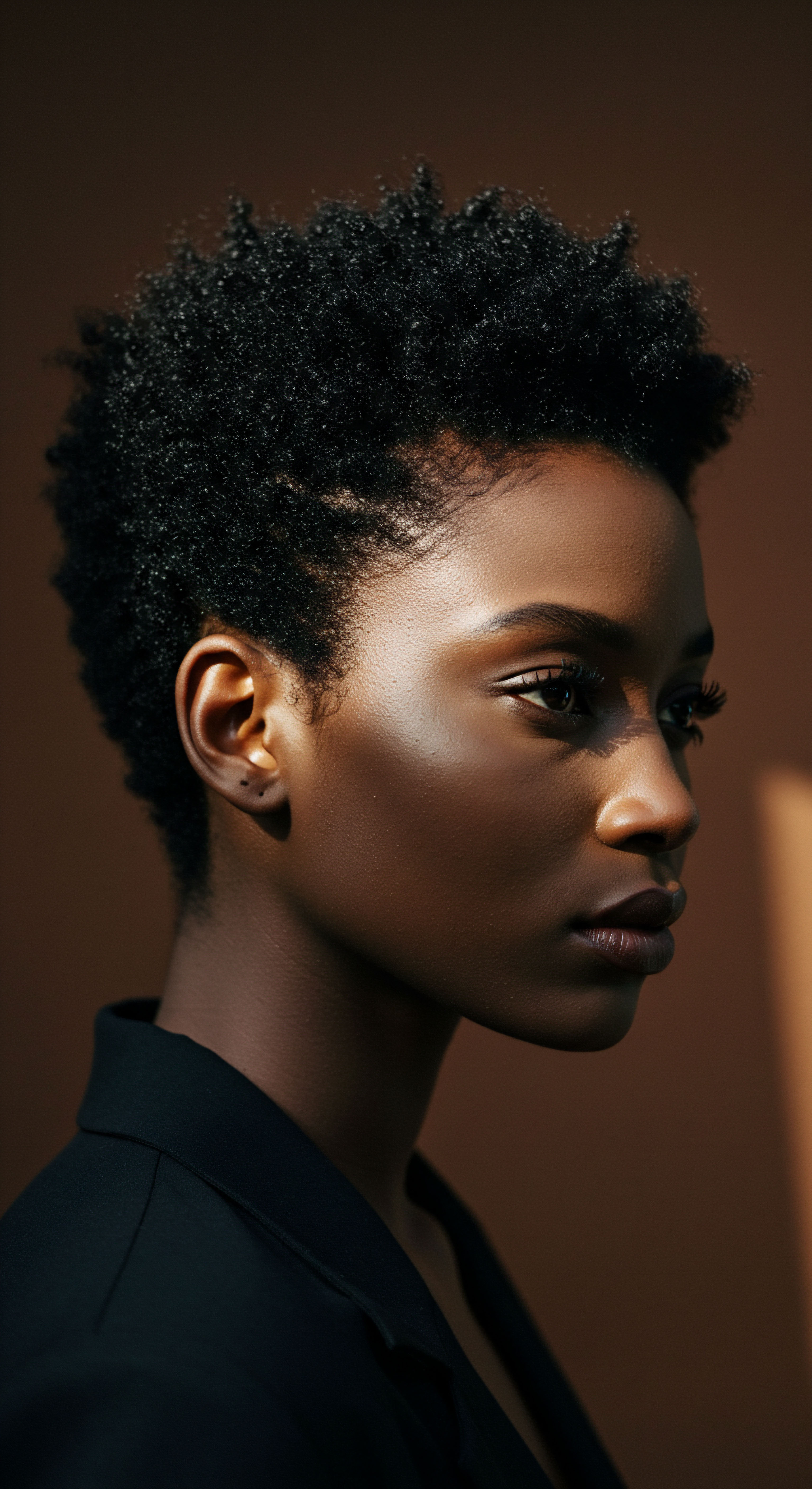
What Role Do Ingredients Play in Hair Dryness?
The efficacy of any hair care ritual rests heavily on the ingredients chosen. For tightly coiled hair, a focus on specific categories of ingredients can significantly impact moisture retention and overall hair health.
- Humectants ❉ These ingredients, such as Glycerin, Hyaluronic Acid, and Aloe Vera, draw moisture from the air into the hair shaft. They are particularly beneficial in humid climates, but in very dry environments, they can paradoxically pull moisture from the hair if there is not enough humidity in the air, so their use requires a thoughtful approach.
- Emollients ❉ Rich oils and butters like Shea Butter, Coconut Oil, and Jojoba Oil create a protective film on the hair surface, sealing in moisture and providing a soft, supple feel. They help to smooth the cuticle, reducing the likelihood of water loss.
- Proteins ❉ Hydrolyzed proteins (like Hydrolyzed Wheat Protein or Rice Protein) can temporarily fill gaps in the hair’s cuticle, strengthening the strand and improving its ability to hold onto moisture. However, balance is key; excessive protein can lead to stiffness and brittleness, especially in hair with lower porosity.
The careful selection and layering of these ingredients, often following the “LOC” (Liquid, Oil, Cream) or “LCO” (Liquid, Cream, Oil) method, allows for a comprehensive approach to moisture delivery and retention. This layering strategy ensures that water is first introduced, then sealed in with an oil, and finally protected with a cream, creating a lasting barrier against environmental stressors.
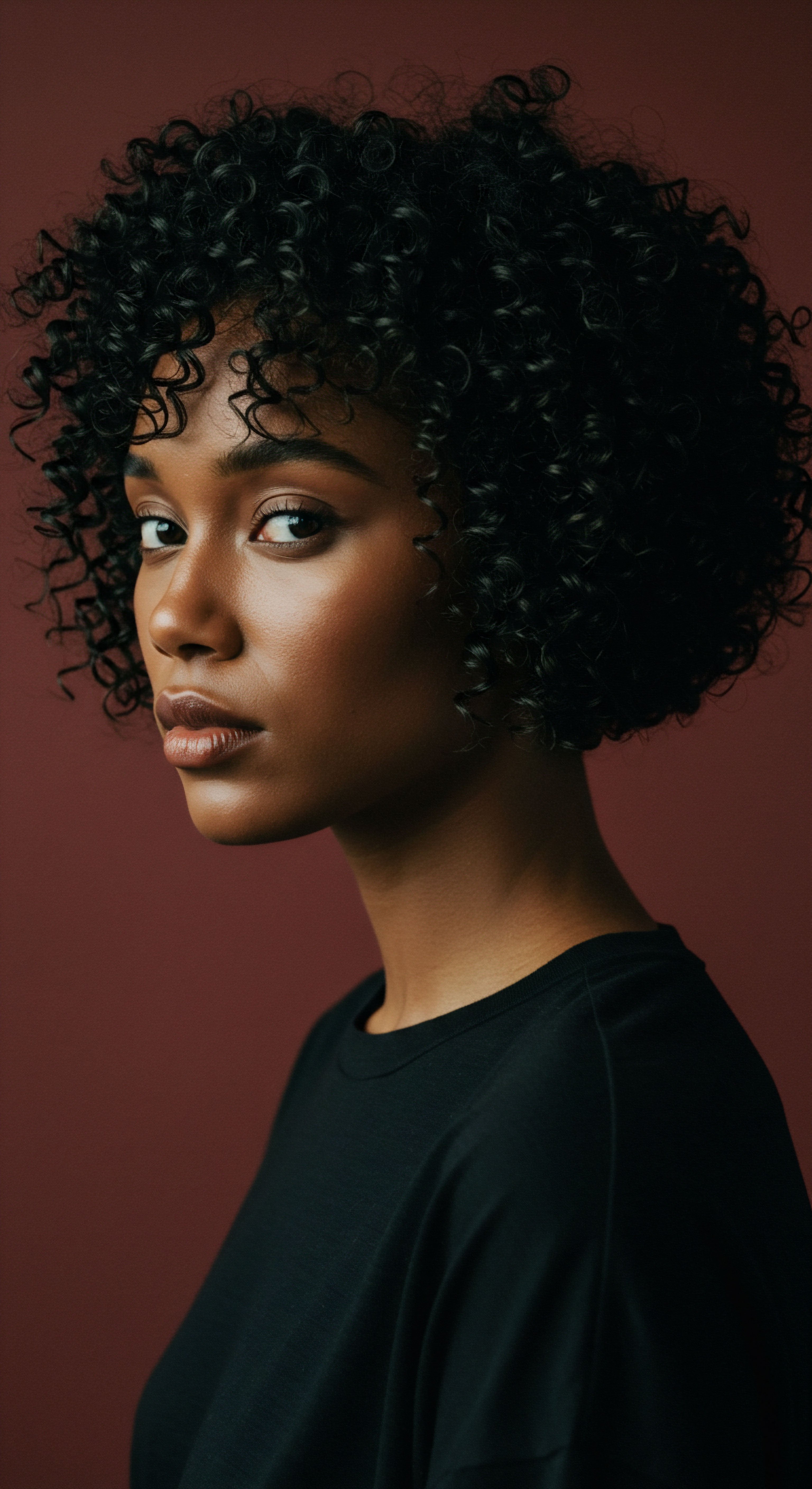
Common Hair Problems and Their Solutions
Tightly coiled hair, due to its structural characteristics, is prone to specific concerns beyond general dryness. Addressing these systematically contributes to a healthier, more moisturized feel.
- Breakage ❉ The frequent bends in coiled hair create points of structural weakness, making it more susceptible to breakage, especially during manipulation. Gentle detangling, using wide-tooth combs on wet hair, and incorporating protein treatments judiciously can help mitigate this.
- Single Strand Knots ❉ These tiny knots, colloquially known as “fairy knots,” form when a single strand of hair coils upon itself. They are a common frustration and can lead to tangles and breakage. Regular trims, protective styling, and minimizing friction are effective preventative measures.
- Lack of Definition ❉ Dryness often manifests as a lack of curl definition. Hydrating products, applied to soaking wet hair, can help the coils clump together, enhancing their natural pattern and reducing the appearance of frizz.
Understanding these common challenges as part of the coiled hair experience, rather than as defects, allows for a more compassionate and effective approach to care. Each ritual, from the products chosen to the methods of application, becomes an act of thoughtful engagement with the hair’s inherent design.

Relay
Having explored the foundational anatomy and the purposeful rituals of care, we now journey into the deeper currents that shape the experience of tightly coiled hair. The perception of dryness is not a solitary phenomenon; it is a dialogue between biology, environment, and cultural understanding, a complex symphony of influences. This section invites a profound contemplation of the less apparent complexities, drawing from scientific inquiry and the rich tapestry of human experience, to illuminate the interconnected factors that contribute to how coiled hair feels and behaves. We seek not merely to explain, but to comprehend the profound wisdom residing within these strands.

Why Do Coiled Hair Cuticles Struggle with Moisture Retention?
The very geometry of tightly coiled hair, with its numerous twists and turns, inherently challenges the smooth, even layering of its outermost protective cuticle. Unlike straight hair, where cuticular scales lie relatively flat, coiled hair experiences constant shifts in angle. These angular changes mean that the cuticle scales, designed to overlap like shingles, are often raised or unevenly aligned at the apex of each coil. This structural reality creates microscopic gaps and inconsistencies along the hair shaft.
This architectural vulnerability significantly impacts the hair’s ability to retain moisture. Water, a small molecule, can more easily escape through these slightly lifted cuticles, leading to a higher rate of evaporative loss. Furthermore, the natural lipid layer, which acts as a hydrophobic barrier on the hair’s surface, struggles to form a continuous, unbroken seal along the convoluted path of a coiled strand.
The result is a hair fiber that, despite absorbing water readily, may struggle to hold onto it, giving rise to the persistent sensation of dryness. This is not a deficiency of the hair, but rather a consequence of its magnificent, intricate design.
The structural bends of coiled hair create inherent cuticle vulnerabilities, making it difficult for the hair to maintain its protective lipid barrier and retain moisture.
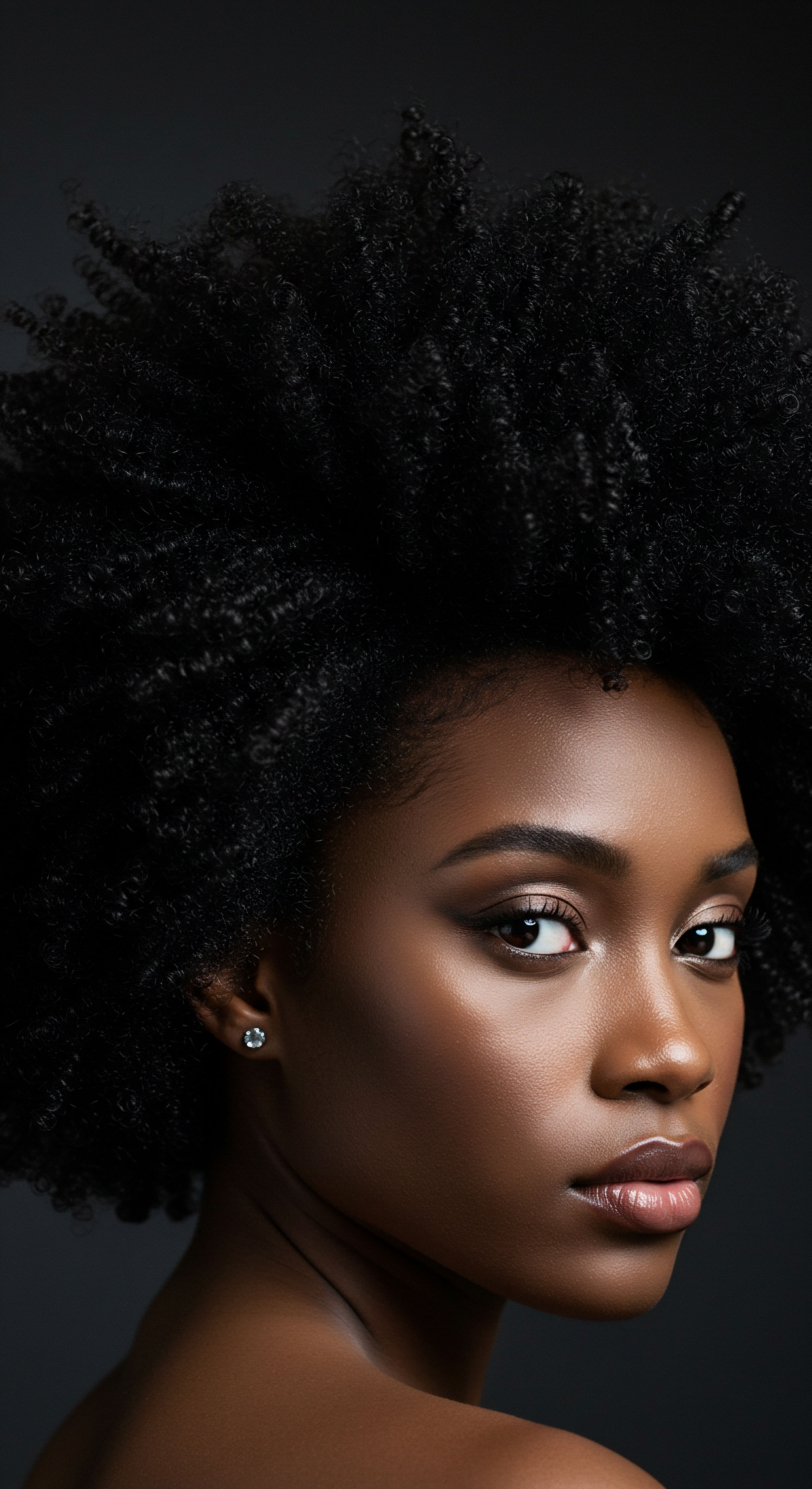
What Specific Lipid Deficiencies Contribute to Dryness?
Beyond the physical structure, the biochemical composition of hair plays a pivotal role in its moisture balance. While research has sometimes offered conflicting views on overall lipid content across different hair types, a particularly compelling area of study focuses on specific lipid classes, notably ceramides. Ceramides are vital components of the cell membrane complex (CMC) within the hair’s cuticle, acting as a crucial part of the hair’s natural barrier against water loss and external aggressors.
A groundbreaking 2022 study in the Journal of Investigative Dermatology illuminated a significant disparity ❉ African American Women with High Porosity Hair Had 40% Fewer Ceramides in Their Hair Cuticles Compared to Those with Normal Porosity. This reduction in these essential lipid molecules directly compromises the hair’s protective barrier, leading to increased brittleness and diminished moisture retention. The study further revealed that topical application of phytoceramides, plant-based ceramides, could replenish this deficit, leading to a 50% improvement in moisture retention, a 30% reduction in frizz, and a 25% increase in hair strength. This data suggests that the feeling of dryness in tightly coiled hair may stem not only from its physical shape but also from a quantifiable biochemical difference in its protective lipid composition, offering a more precise target for effective hair care interventions.
| Lipid Type Ceramides |
| Primary Location Cuticle (Cell Membrane Complex) |
| Role in Hair Health Form a protective barrier, crucial for moisture retention and cuticle integrity. |
| Lipid Type Fatty Acids |
| Primary Location Cuticle and Cortex |
| Role in Hair Health Contribute to hair's hydrophobicity and flexibility. |
| Lipid Type Cholesterol |
| Primary Location Cuticle and Cortex |
| Role in Hair Health Works with ceramides and fatty acids to maintain barrier function. |
| Lipid Type 18-MEA (18-methyl eicosanoic acid) |
| Primary Location Outer Cuticle Surface |
| Role in Hair Health Provides hydrophobicity and reduces friction, often lost through chemical/heat damage. |
| Lipid Type Understanding these lipids provides pathways for targeted treatments to support hair's natural barrier. |

Environmental Factors and Coiled Hair
The environment in which tightly coiled hair exists plays an undeniable role in its moisture levels. Arid climates, low humidity, and even indoor heating or air conditioning can strip moisture from the hair, especially if its cuticle is already predisposed to being slightly raised. The hair, in its constant exchange with the surrounding air, will lose water if the external environment is drier than its internal state. This is a fundamental principle of equilibrium, and coiled hair, with its structural predisposition to moisture loss, is particularly susceptible.
Furthermore, exposure to harsh elements such as strong winds or excessive sun can further compromise the hair’s outer layers, accelerating water evaporation and contributing to a rough, dry feel. The protective measures often adopted within textured hair care, such as protective styling, are not merely aesthetic choices; they are a response to these environmental challenges, a way of shielding the hair from the elements that seek to deplete its hydration.

Cultural Practices and Hair Health
The historical and cultural journey of tightly coiled hair often intersects with practices that, while rooted in aesthetics or societal pressures, can inadvertently contribute to dryness and damage. Chemical relaxers, for instance, permanently alter the hair’s disulfide bonds, fundamentally changing its structure. While achieving a straighter look, this process can severely compromise the cuticle, leading to increased porosity and a diminished ability to retain moisture. Similarly, excessive heat styling, a common practice to alter coil patterns, can cause thermal damage, stripping the hair of its natural lipids and protein, resulting in a brittle, dry texture.
The ongoing conversation within the textured hair community emphasizes a return to practices that celebrate and support the hair’s natural state. This cultural shift acknowledges the inherent beauty of coils and prioritizes health over conformity, recognizing that truly vibrant hair begins with understanding and respecting its unique needs. It is a movement towards self-acceptance and informed care, a testament to the resilience and adaptability of both the hair and the individuals who wear it.
The experience of dryness in tightly coiled hair is thus a multifaceted phenomenon, born from the interplay of its unique structural architecture, specific biochemical compositions, environmental stressors, and the historical legacy of care practices. By examining these layers, we gain a more complete picture, moving beyond superficial explanations to a profound appreciation for the science and spirit of textured strands.

Reflection
The journey through the intricate world of tightly coiled hair, from its very roots to the rituals that sustain it and the broader cultural narratives that shape its perception, leaves us with a deepened sense of wonder. The sensation of dryness, initially a simple tactile observation, unfolds into a rich tapestry of biological marvel and environmental interaction. It is a reminder that beauty is not merely skin deep, but woven into the very structure of who we are, demanding a compassionate and informed engagement.
As we conclude this exploration, we are left with a quiet understanding ❉ that to truly care for tightly coiled hair is to honor its inherent design, to listen to its subtle whispers, and to respond with both scientific wisdom and gentle hands. The ongoing conversation about textured hair is one of discovery, resilience, and a celebration of diversity in its most exquisite form.
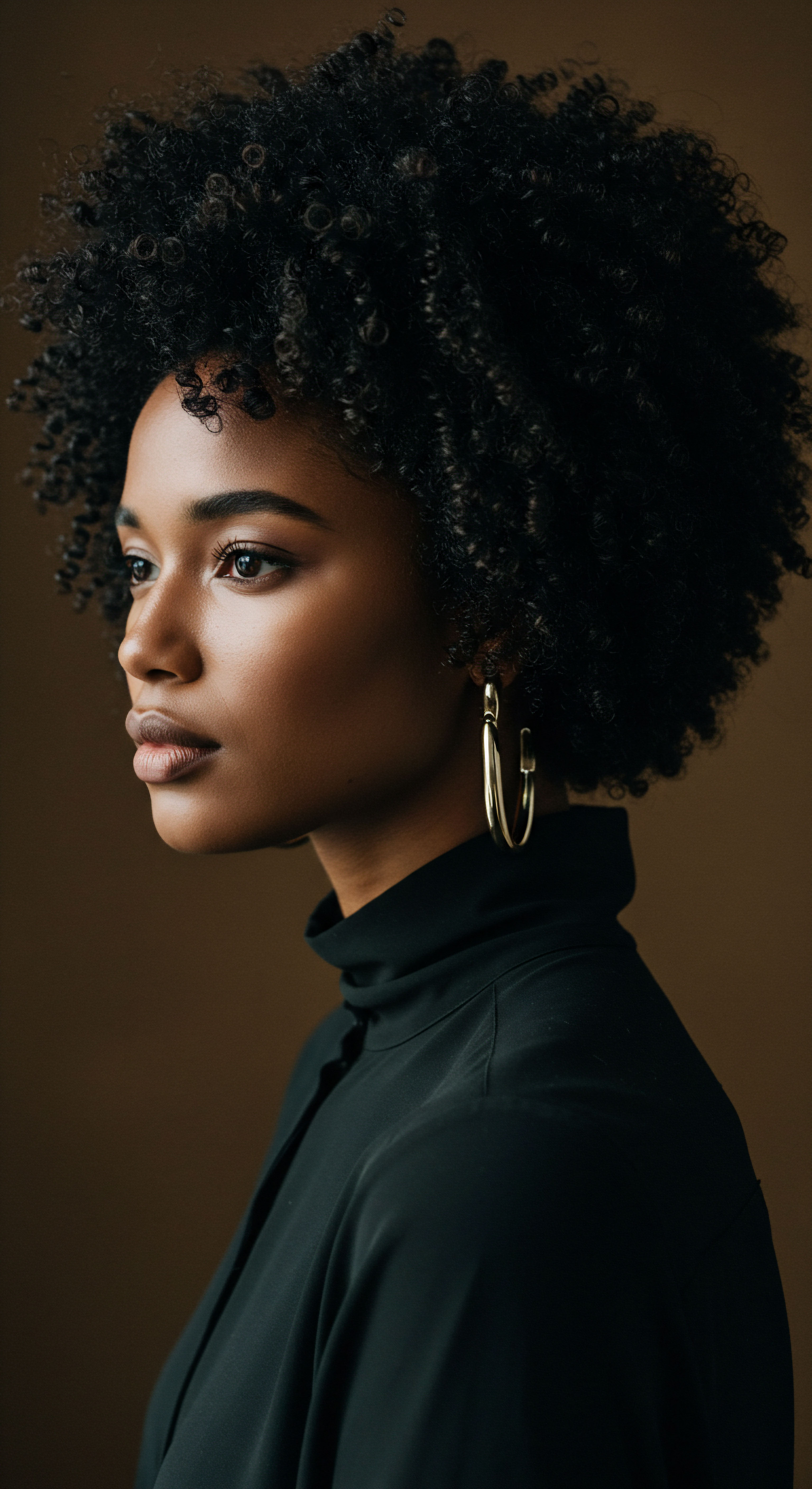
References
- Gavazzoni Dias, M. F. R. (2015). Hair cosmetics ❉ An overview. International Journal of Trichology, 7(1), 2–15.
- Gavazzoni Dias, M. F. R. (2019). The What, Why and How of Curly Hair ❉ A Review. Journal of Cosmetic Dermatology, 18(6), 1629–1638.
- Gavazzoni Dias, M. F. R. (2020). Hair Shaft Damage. International Journal of Trichology, 12(3), 97–103.
- Gavazzoni Dias, M. F. R. (2020). Hair Cosmetics ❉ An Overview. International Journal of Trichology, 12(1), 2–15.
- Gavazzoni Dias, M. F. R. (2020). Hair and Scalp ❉ A Review. International Journal of Trichology, 12(4), 147–154.
- Gavazzoni Dias, M. F. R. (2021). Hair ❉ An Overview. International Journal of Trichology, 13(1), 2–11.
- Robins, J. (2015). The Science of Black Hair ❉ A Comprehensive Guide to Textured Hair Care. J. Robins Publishing.
- Ruetsch, S. B. & Bhushan, B. (2010). Hair ❉ Science and Technology. Academic Press.
- Saint-Leger, D. (2009). Hair Care ❉ An Illustrated Dermatologic Handbook. Springer.
- Verma, R. J. & Garg, P. (2017). Cosmetic Science and Technology. CRC Press.